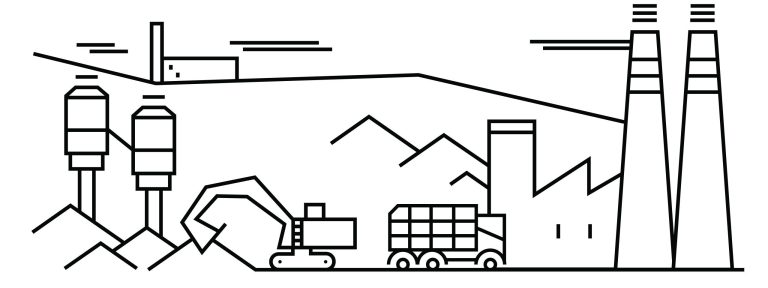Why is sustainable mining important for a net carbon zero future?
Although mining seems to be unsustainable at its core, it is essential for a sustainable future. Nearly everything around us consist of materials that must be retrieved from the ground – an old saying goes
“If You Can’t Grow It, You Have to Mine It”. This is especially important regarding the
transition towards a battery economy. In a battery economy, operating devices with batteries in the best case causes no emissions. However, each battery itself has a carbon footprint because of the emissions offset in the mining and refining process. Hence, each batteries’ carbon footprint is influenced by the materials it uses. Depending on how energy intensive the mining of these materials, the higher the carbon footprint of the battery.
Especially Lithium, Nickel, Cobalt and Manganese are raw materials for which mining, and refining is very energy intensive. The materials are used in Li-Ion Batteries in cars, phones, laptops and many more appliances.
How sustainable is mining?
Right now, mining is hardly sustainable. For decades, the negative impact of mining on environmental and social dimension has rarely been penalized. Therefore, mining companies often maximized their output at the expense of sustainability. Mines were often not closed properly or the companies operating the mines could not fund renaturation.
With the rising awareness about climate change and the establishment of environmental, social, and corporate governance (= ESG), mining companies started to focus more on the sustainability of mining. Nevertheless, we are only at the beginning of an age of sustainability in mining.
How can mining become more sustainable?
There are multiple dimensions to approach sustainable mining. The lifecycle of a mine and its operation is complex and combines multiple variables were sustainability comes into play. A first step is to analyze how “green” the energy sources are. Mining is exceptionally energy intensive. Note: By “sustainable mining”, we refer to the whole process of mining.
For example, in the case of Nickel, refining with the method of HPAL results in 24 tons of CO2 equivalent, for every ton of refined Nickel. Electricity alone is responsible 13,4 tons, as most of the time, coal is used. Just by switching to renewable energies, this can be reduced to 0,55 tons. In addition, with other greener measures in the same refining method, the overall CO2 footprint of 24 tons can be reduced by 16,5 tons. Another important part plays the closing of the site, where the mined area is renaturated. This was often not the case in the past. Also, development of new technologies plays a big role. If you are interested in more ways to make mining greener, contact Müncon right away! With our partner network, we have a broad experience in sustainable mining.
What are other possibilites to reduce mining?
The trend towards a circular economy could reduce the overall need for mining. By using a product as long as possible and then recycling its raw materials, there is less need for new mined material. The battery value chain is a great example for this: First, an old electric vehicle battery can be used for another 10 years in a storage system in its so-called
second life. After that, the battery can be
recycled, recovering more than 95% of its materials. The EU plans, that 5% of its demand for Nickel, 9% of Lithium, and 13% of Cobalt can be recovered from recycling. For more examples of a circular economy, see the
10R Concept.
A excellent overview about all the challenges is given in the TED Talk by Lucy Crane below:
